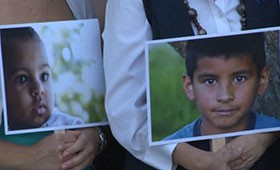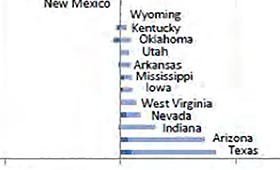Cronkite News has moved to a new home at cronkitenews.azpbs.org. Use this site to search archives from 2011 to May 2015. You can search the new site for current stories.
State’s foster-care cases rose over decade, as national numbers fell
WASHINGTON – Arizona saw the number of kids in its foster care system rise significantly from 2002-2012, a time when most other states were posting sharp drops in their foster care rolls, according to new federal data.
The report by the Department of Health and Human Services’ Administration for Children and Families said Arizona was one of 11 states with an increase in foster children and one of only two – along with Texas – with significant increases.
Arizona had the second-largest increase in the nation over the decade, adding 7,296 children to Texas’ 8,294. There were 15,751 foster kids in Arizona at the end of March, according to the latest numbers from the state.
Advocates said the numbers are more evidence of a state foster care system in crisis, one that has been “overworked and overwhelmed” as budgets have been cut.
“There was a perfect storm of things – the recession hit, the budget cuts had to be made and so more kids were coming in to care,” said Russ Funk, director of marketing and family recruitment at Aid to Adoption of Special Kids.
State officials said there is no one reason for the increase, but expressed confidence that recent improvements will have an effect.
After reports in late 2013 that more than 6,000 foster-care cases had not been investigated, Gov. Jan Brewer created a Child Advocate Response Examination (CARE) Team of lawmakers, advocates and state officials to oversee those cases and monitor Child Protective Services.
And the Legislature this spring voted to give oversight of the state’s foster care system to a new Department of Child Safety.
Jennifer Bowser, a spokeswoman for the new department, said she has seen improvements made “all over the place” to the state’s child care system since the agency’s creation.
Bowser said the state is revamping its training process for caseworkers, has reviewed legislation for additional staffing and is making significant progress on backlogged cases.
The 15,751 children in out-of-home care this March represented an increase of 714 children from the previous year, according to the state.
While the state is attempting to improve the child protective services system and provide more preventive services, families are still faced with challenges that put them in difficult situations – situations that can lead to their children being placed in foster care.
“There are a variety of different reasons that children become neglected or put at risk of being neglected when their parents are struggling,” Funk said.
Beth Rosenberg, director of child welfare and juvenile justice at Children’s Action Alliance, said the increases are occurring because of a system that has been “overworked and overwhelmed.”
“We were bringing more kids in to the system than the kids were leaving the system,” she said.
Funk said a prime factor for the surge of children in the Arizona foster care system was budget cuts during the recession that led to reductions in preventive services, such as parenting skill workshops and addiction rehab support.
And while the system was gaining kids, Funk said, there are “fewer caseworkers handling more cases with less services in place to help return those children” to their families.
Bowser agreed that socioeconomic challenges and substance-abuse issues could make it more likely that a child is removed from his or her home.
“If we can provide more prevention services – early intervention services – the hope is to not have the children need to be removed,” she said.








